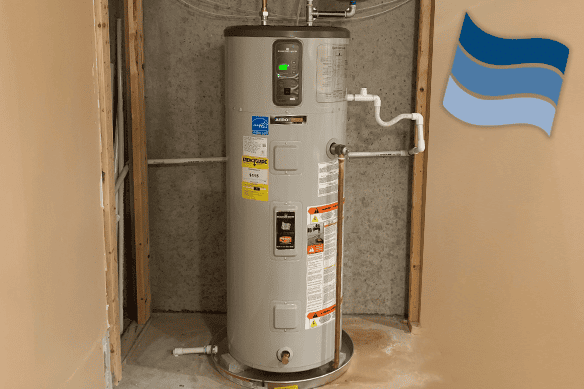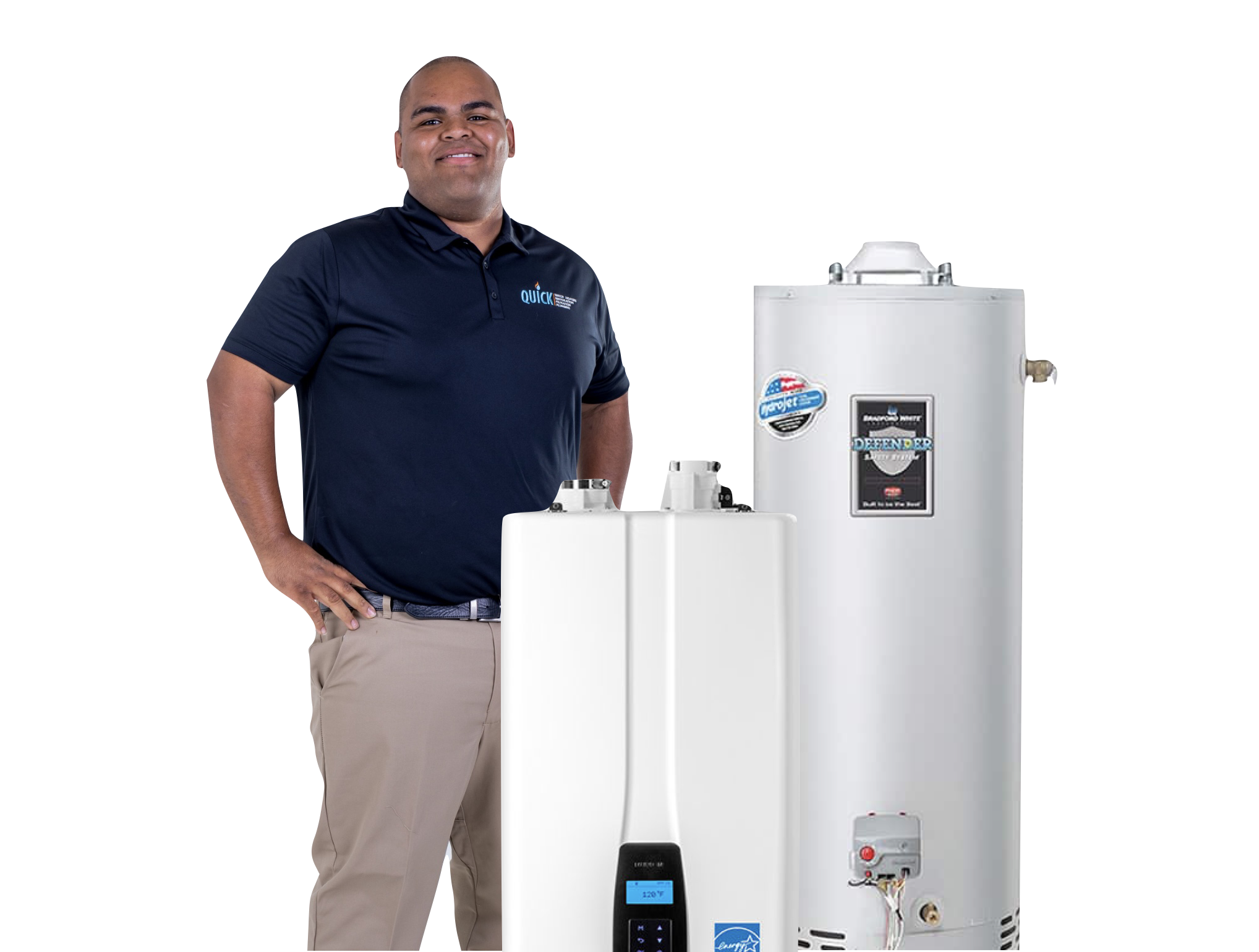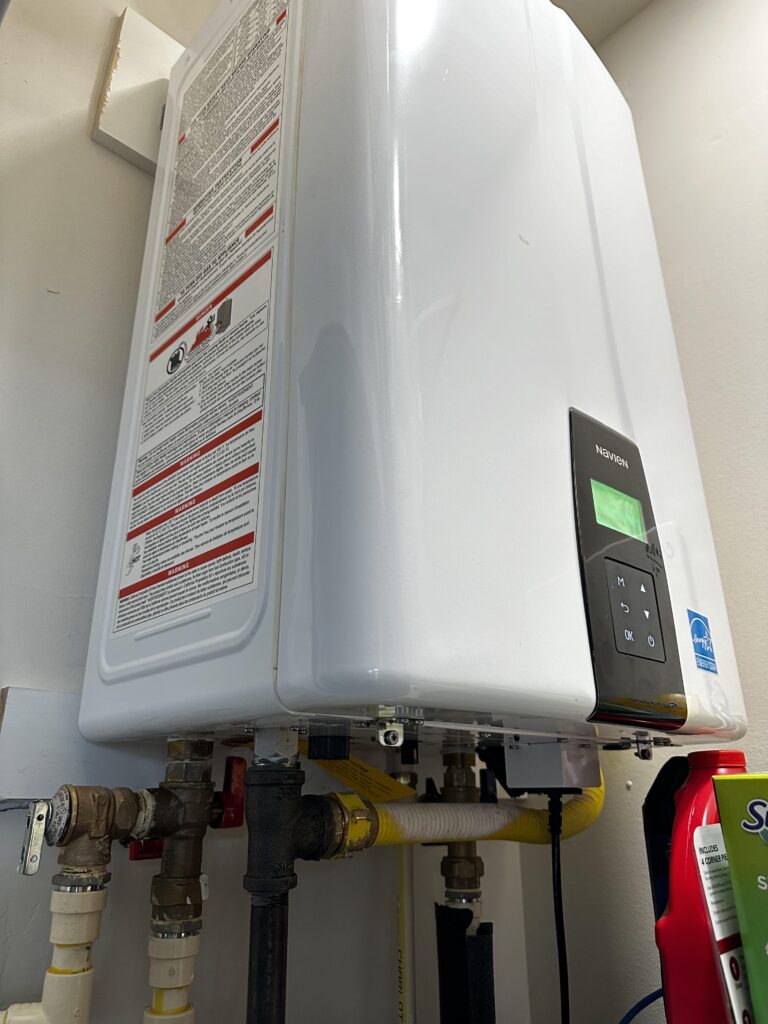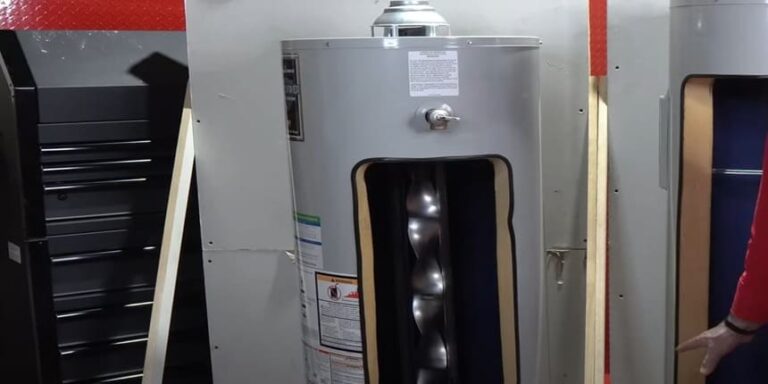Is your Bradford White water heater leaving you shivering in the shower? You’re not alone.
When your water heater doesn’t deliver the warmth you expect, it can turn your daily routines into frustrating challenges. But don’t worry; you’re in the right place to find solutions. This guide will shed light on why your Bradford White water heater might not be as hot as you need it to be and what you can do to restore that comforting warmth.
By understanding the common issues and simple fixes, you’ll soon be back to enjoying those steamy showers and toasty baths. Dive in, and let’s get your water heater back on track!

Credit: www.facebook.com
Common Causes
Bradford White water heaters may not heat properly due to thermostat issues or sediment buildup in the tank. A faulty heating element can also cause insufficient hot water. Regular maintenance and inspection help identify these common problems early.
When your Bradford White water heater isn’t delivering hot water as expected, it’s frustrating. You rely on it for everything from a soothing shower to washing dishes. Understanding the common causes behind this issue can help you troubleshoot effectively and get back to enjoying hot water again. Let’s dive into some typical culprits that might be affecting your water heater’s performance.Thermostat Issues
A thermostat regulates the temperature of the water in your heater. If it’s not working correctly, you might end up with lukewarm water. This could be due to a faulty setting or a malfunction. Double-check the thermostat settings. Are they set lower than usual? Adjust them to your preferred temperature. If the problem persists, it might be time for a replacement. Consider the last time you adjusted the thermostat. Was it after a power outage? Sometimes, settings can reset unexpectedly.Sediment Buildup
Over time, minerals in the water can accumulate at the bottom of your heater. This sediment buildup can insulate the heating element, causing it to work harder and produce less heat. Regular maintenance is key. Flushing your water heater periodically can minimize sediment accumulation. Have you noticed a decrease in water pressure or odd noises? These can be signs of sediment buildup. Think about areas with hard water. If you live in one, sediment buildup might be more frequent, requiring more attention.Faulty Heating Element
The heating element is essential for warming your water. If it’s damaged or worn out, your water heater won’t heat efficiently. You might need to replace it to restore optimal function. Inspect the heating element for signs of wear or damage. Sometimes, a visual check can reveal if it’s burnt out or corroded. When was the last time you replaced a component in your water heater? Regular checks can prevent unexpected cold showers. Have you ever had your water heater serviced? Routine maintenance can catch issues like faulty heating elements early, saving you from cold water woes. Understanding these common causes can help you pinpoint the problem and take action. Have you experienced any of these issues before? Share your thoughts and solutions.Troubleshooting Steps
Experiencing lukewarm water from your Bradford White water heater? Check the thermostat settings first. Ensure power supply is stable. Inspect heating elements for damage. Regular maintenance can prevent future issues.
Having a water heater that isn’t providing enough hot water can be frustrating. Whether you’re dealing with cold showers or dishes that won’t get clean, there are several troubleshooting steps you can take to potentially solve the problem. Let’s explore these steps together, focusing on checking the thermostat, inspecting the heating element, and flushing the tank.Checking The Thermostat
First, you’ll want to check the thermostat settings on your Bradford White water heater. Make sure it’s set to your desired temperature. Sometimes, the thermostat may accidentally be set lower than you realize. Adjust it and wait to see if this changes the water temperature. Remember, a safe temperature is usually around 120°F to avoid scalding.Inspecting The Heating Element
If adjusting the thermostat doesn’t help, inspecting the heating element might be your next step. This component is crucial because it heats the water in the tank. Turn off the power to the water heater to avoid any electrical hazards. Then, remove the access panel to check for any visible signs of damage or corrosion on the element. A multimeter can be handy to test for continuity, ensuring the element is working correctly.Flushing The Tank
Over time, sediment can build up in the tank, reducing efficiency and heating capability. Flushing the tank can help restore its performance. Begin by turning off the water heater and attaching a hose to the drain valve. Carefully drain the tank to remove the sediment buildup. You might be surprised at how much debris comes out! This process can improve your water heater’s efficiency, giving you hotter water. These steps can often resolve the issue, but if the problem persists, it might be time to consult a professional. Have you ever tried any of these troubleshooting tips? Did they work for you? Sharing your experiences can help others facing the same problem.Maintenance Tips
Maintaining your Bradford White water heater is essential. Proper care ensures it runs efficiently. Regular maintenance can prevent issues. It can keep your water hot and reliable.
Regular Tank Flushing
Flushing the tank removes sediment buildup. Sediment can hinder heating. It can lead to less hot water. Experts recommend flushing every six months. This keeps the heater running smoothly.
Thermostat Calibration
Check the thermostat settings regularly. A miscalibrated thermostat affects water temperature. Adjust the thermostat for optimal heating. Ensure it is set to the desired temperature. This improves efficiency and comfort.
Routine Inspections
Conduct routine inspections of the water heater. Look for leaks or rust. Check for unusual sounds. Address issues promptly to prevent bigger problems. Regular inspections extend the heater’s life.
Professional Help
Sometimes, your Bradford White water heater might not be hot enough. DIY fixes may not always solve the problem. In such cases, seeking professional help becomes crucial. Professional technicians can identify underlying issues accurately. They ensure that your water heater operates efficiently.
Considering professional help saves time and effort. It also extends the lifespan of your water heater. Investing in expert assistance prevents recurring issues. This ensures consistent hot water supply. Below, explore when to call a technician and how to choose reliable service.
When To Call A Technician
Call a technician if you notice persistent lukewarm water. Frequent temperature fluctuations also signal a deeper issue. Unusual noises from the heater indicate mechanical problems. Leaks around the water heater require immediate attention. These issues often necessitate expert intervention.
If your water heater is old, consult a technician. Older models may need more frequent servicing. Professional assessment ensures safe operation. Regular maintenance prevents potential hazards. Never ignore warning signs of malfunctioning equipment.
Choosing A Reliable Service
Select a service with certified technicians. Experience matters. Choose a company with a proven track record. Read customer reviews for insights. Positive feedback indicates reliability. Ensure the service provider is licensed and insured. This guarantees quality and accountability.
Look for transparent pricing. Avoid hidden fees. Request quotes before hiring. Compare services and costs. A reliable company offers clear communication. They explain the problem and solution in simple terms. Customer support should be prompt and helpful.
Preventive Measures
Having a Bradford White water heater is a smart choice for reliable hot water. But sometimes, the water might not be hot enough. Understanding preventive measures can help maintain optimal performance. These measures are crucial for ensuring consistent hot water availability.
Water Quality Considerations
Water quality impacts heater efficiency. Hard water can cause mineral buildup. This reduces heating ability. Regularly check water hardness levels. Use water softeners if necessary. They minimize scale formation. Proper water quality extends heater lifespan. It also improves heating performance.
Installation Best Practices
Correct installation is vital. Ensure professional installation. Improper setup causes inefficiencies. Follow manufacturer’s guidelines closely. Correct placement is important. Avoid installing in damp areas. Ensure proper ventilation. Ventilation prevents overheating issues. Secure electrical connections properly. This avoids power supply problems.

Credit: www.bradfordwhite.com

Credit: quickwaterheater.com
Frequently Asked Questions
Why Is My Bradford White Water Heater Not Hot Enough?
Your Bradford White water heater may not be hot enough due to a faulty thermostat or heating element. Sediment build-up in the tank can also reduce efficiency. Consider checking the thermostat settings or flushing the tank. If problems persist, contacting a professional technician is recommended for a thorough inspection and repair.
How Do I Adjust The Thermostat On My Bradford White Heater?
To adjust the thermostat, locate it beneath the water heater panel. Turn off the power first for safety. Remove the access panel and insulation to find the thermostat. Use a screwdriver to adjust the temperature setting. Be cautious not to exceed 120°F to prevent scalding risks.
What Causes Sediment Build-up In Water Heaters?
Sediment build-up occurs from mineral deposits in water, especially in areas with hard water. As water heats, minerals separate and settle at the tank’s bottom. This reduces heating efficiency and can cause noises. Regularly flushing your water heater can help prevent sediment accumulation and maintain optimal performance.
How Often Should I Flush My Bradford White Water Heater?
Flushing your water heater every six to twelve months is recommended. This helps remove sediment build-up and prolongs the heater’s lifespan. Regular maintenance ensures efficient operation and consistent hot water supply. Always follow the manufacturer’s guidelines or consult a professional technician for specific maintenance advice.
Conclusion
Troubleshooting your Bradford White water heater can seem daunting. Yet, basic checks can often solve the problem. Start with the thermostat setting. Ensure it’s high enough for your needs. Check for sediment build-up in the tank. This might affect heating efficiency.
Look for any leaks or faulty parts too. Regular maintenance prevents many issues. If problems persist, consider calling a professional. They have the expertise to fix it safely. Keeping your water heater in good shape ensures a steady hot water supply.
Always prioritize safety first. Your comfort and peace of mind depend on it.



